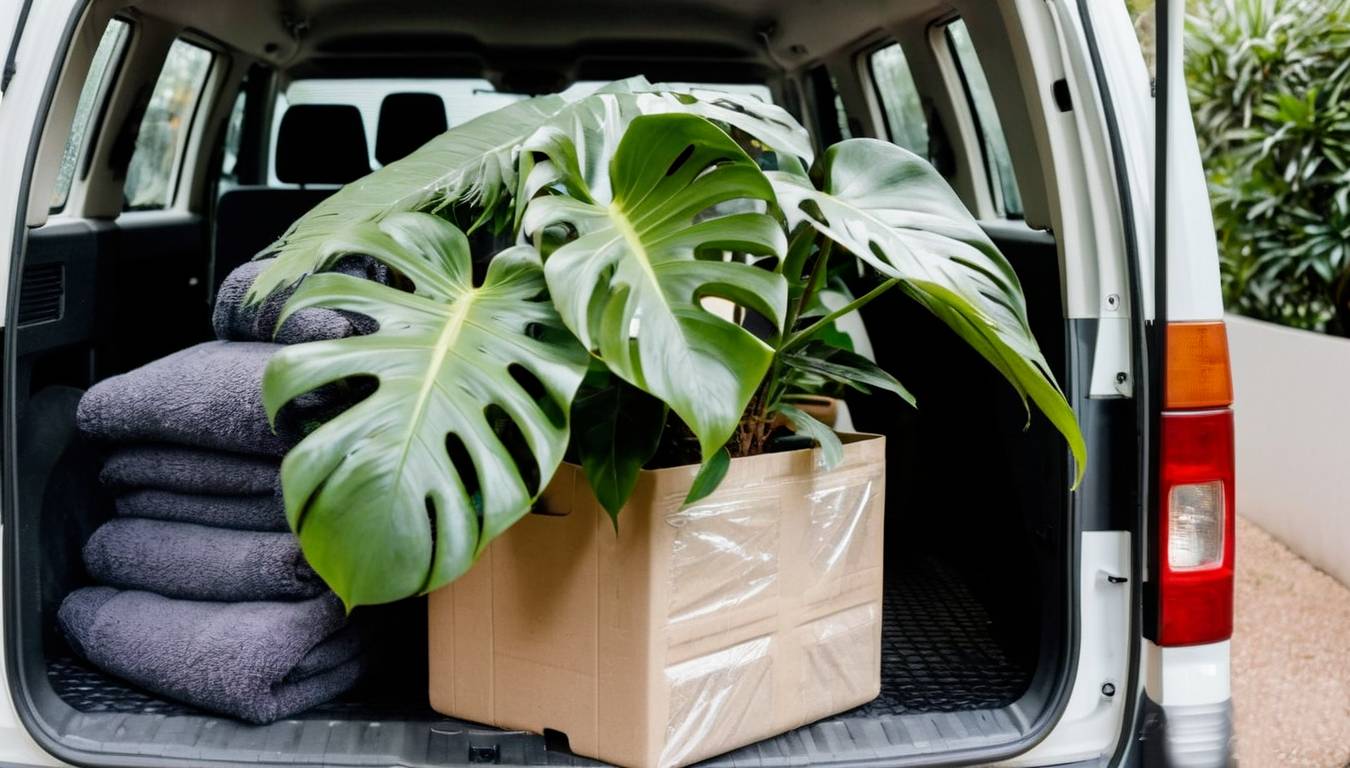
Moving to a new home is exciting, but transporting large, heavy houseplants can be a challenge. This guide will walk you through the process step-by-step, ensuring your plants arrive safely and thrive in their new environment.
In this article
Preparing for the move
- Repotting for Easier Transport
- For large plants like monstera or fiddle leaf figs, remove them from their heavy pots and transfer them to lightweight, temporary containers (e.g., plastic nursery pots).
- Wrap the root ball in damp newspaper or a burlap sack to keep it moist during transit.
- Once you’ve moved, repot the plant back into its original or a new larger pot.
- Securing Vines and Branches
- For plants with long vines (e.g., pothos or philodendron), gently gather the vines and secure them with soft ties, twine, or Velcro plant ties.
- Wrap the vines around a cardboard tube or foam pool noodle to prevent tangling and damage.
- For large-leaved plants, use tissue paper or bubble wrap to cushion the leaves and prevent tearing.
- Watering Before the Move
- Water your plants 1-2 days before moving so the soil is moist but not waterlogged. This helps prevent root rot and keeps the plant hydrated during transit.
- Avoid watering right before the move, as soggy soil can make the plant heavier and more prone to spillage.
- Protecting the Plant and Pot
- Wrap the pot in bubble wrap or a towel to prevent scratches and cracks. Secure the wrap with tape or rubber bands.
- Place the pot in a sturdy box slightly larger than the plant. Fill any gaps with packing paper, foam, or towels to prevent shifting during transit.
- For very large plants that won’t fit in a box, use a moving blanket or furniture pad to wrap the entire plant and pot.
Transporting Your Plants
- Choosing the Right Vehicle
- Transport your plants in a car, van, or moving truck where you can control the environment. Avoid public transportation or open-bed trucks, as plants may get jostled or exposed to harsh weather.
- Place plants in a stable position where they won’t tip over. Use seat belts, bungee cords, or non-slip mats to secure them.
- Providing Proper Ventilation
- Crack the windows slightly to ensure airflow, but avoid exposing plants to direct wind or extreme temperatures.
- If moving during hot weather, transport plants early in the morning or late in the evening to avoid heat stress.
- Protecting from Sun and Cold
- Cover plants with a light sheet or towel if they’ll be exposed to direct sunlight during the move.
- In cold weather, preheat the vehicle and avoid leaving plants in the car for extended periods.
After the move
- Unpacking and Inspecting
- Unpack your plants as soon as you arrive. Check for any damage to leaves, stems, or roots.
- Remove any wrapping materials and give the plant a gentle shake to release trapped debris.
- Watering and Light
- Water your plants only when the top 1-2 inches of soil feel dry. Overwatering can stress the roots during this adjustment period.
- Place plants in a spot with bright, indirect light. Avoid direct sunlight until they’ve acclimated to the new environment.
- Monitoring for Stress
- It’s normal for plants to experience some shock, such as leaf drop or wilting. Be patient and maintain a consistent care routine.
- After 2-3 weeks, resume your regular watering and fertilizing schedule.
- Repotting (If Necessary)
- If you temporarily repotted your plant, transfer it back to its original or a new larger pot once it’s settled. Use fresh potting soil to encourage healthy growth.
Pro Tips for Success
- Take before-and-after photos to track your plant’s progress and growth after the move.
- Label boxes containing plants as “Fragile” to ensure careful handling.
- For extremely large or delicate plants, consider hiring a professional plant mover or consulting a local nursery for advice.
By following these detailed steps, you’ll ensure your large plants stand a better chance at surviving the move.







